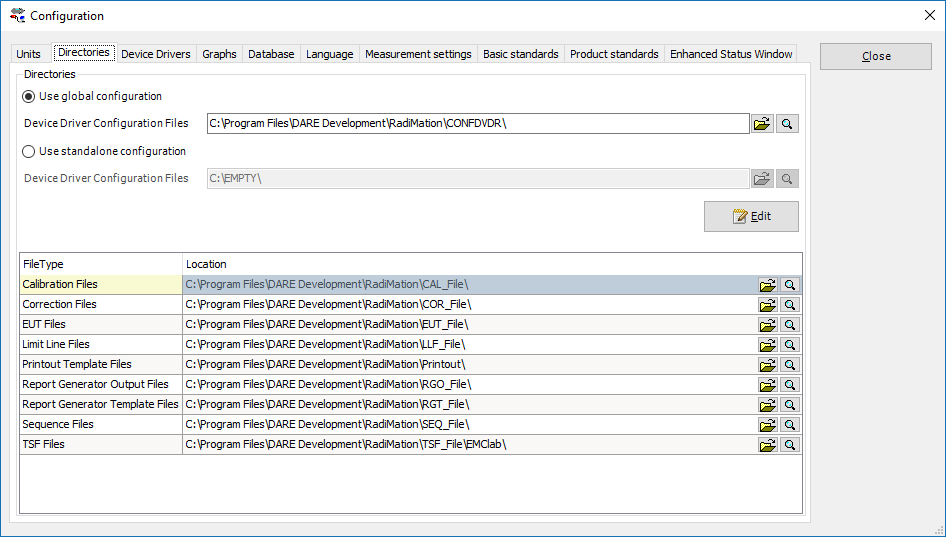RadiMation Application Note 113: Difference between revisions
| Line 17: | Line 17: | ||
== Standalone configuration == | == Standalone configuration == | ||
It is the configuration used by a specific RadiMation version. | It is the configuration used by a specific RadiMation version. | ||
This is useful when validating new versions, | This is useful when validating new versions, because it allows to prevent that different RadiMation versions are using the same (Global) configuration directory. | ||
[[Category:RadiMation Application Note]] | [[Category:RadiMation Application Note]] | ||
[[Category:RadiMation]] | [[Category:RadiMation]] | ||
Revision as of 13:43, 19 April 2017
How to use the RadiMation® Global and Standalone configuration manager
| Warning: | This page is a draft |
This application note describes how the RadiMation® configured manager can be used.
Global configuration
It is the default/main configuration used when installing different versions of RadiMation. This type of configuration was in the past (before the standalone functionality was added) always used. When a new version of RadiMation is installed it will default always start using the Global configuration.
Example: version 2014.1.x 2015.1.x and 2016.1.x are installed, without making any adjustments. In this case, all three RadiMation versions are default using the same ‘Global’ configuration directory. Since this can cause complications - because newer and older version are using the same setting folder - we have added the standalone configuration method.
Standalone configuration
It is the configuration used by a specific RadiMation version. This is useful when validating new versions, because it allows to prevent that different RadiMation versions are using the same (Global) configuration directory.
